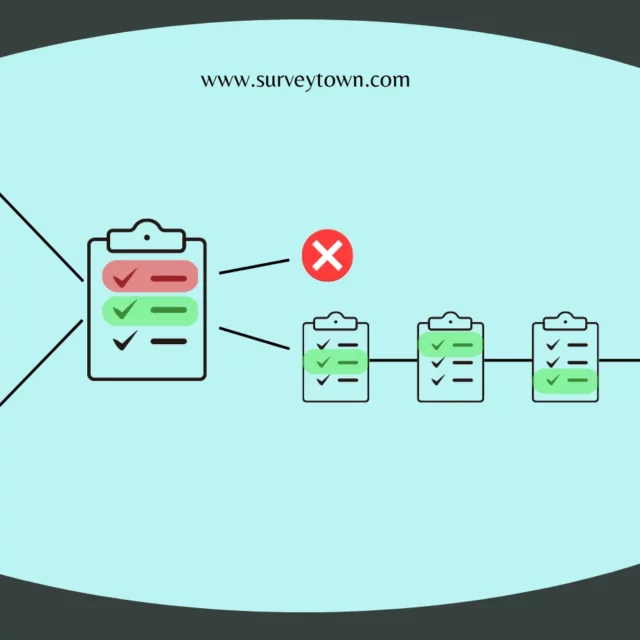Surveys may add diversity to data collection or collect feedback by targeting suitable participants, depending on the company’s purpose. To include an audience based on interests, characteristics, behaviors, or certain elements, you can use screening questions to pre-qualify and have only the suitable respondents. Read on to learn more about screening survey questions.
What Are Screening Questions?
Screening survey questions (or screeners) help identify potential research study or project participants. They help researchers determine the most suitable candidates to participate in the study.
The screening questions aim to collect accurate information about the respondent’s backgrounds to help determine their eligibility for the study. They help pre-qualify the suitable respondents from a large user pool and only collect their feedback for more accurate and concise results.
It’s essential to appropriately design these questions for quick and accurate assessments of whether an individual meets the study’s participation criteria.
Types of Screeners
The different types of screening survey questions or screeners are:
- Behavioral: These are lifestyle queries to understand a person’s daily routine – behavior, attitudes, and decision-making process.
- Industry-specific: To filter out those not tied to a particular business or eliminate participants who may be biased.
- Demographics: Most common screeners include questions about age, gender, marital status, sexual orientation, ethnicity or race, etc.
- Product/service-specific: Eliminates participants who aren’t eligible for a product/service; addresses those who will be buying your products/services.

What Are the Benefits?
The use of screening questions includes the following benefits:
- Reduces survey costs;
- Helps you reach the relevant responders for a more reliable database;
- Eliminates respondent bias;
- Increases efficiency with faster response analysis;
- Improves respondent experience.
How To Use Them
Based on the specific needs of the research project and target population, tailoring the screening survey question types helps capture the most relevant information about a respondent efficiently.
Here are some essential pointers to keep in mind when using screening questions:
- Understand the survey’s purpose and the intended audience.
- Use clear and concise questions relevant to the topic without any overlap.
- Use simple language that’s easy to understand. Avoid jargon or overly complex language.
- Avoid leading or biased questions that could result in inaccurate answers owing to leading language or phrasing.
- Use open-ended and multiple-choice questions to better understand the respondents’ experiences and opinions.
- Avoid ‘yes’ or ‘no’ response options.
- Provide adequate response options for each question.
- Test the survey questions with a small sample group before launching it widely.
- Ensure the confidentiality and anonymity of respondents.
To get the best response from your audience, consider providing adequate instructions at the beginning of the survey. It lets the respondents know the sort of answers you’re looking for.
It’s equally important to order the questions and options appropriately when designing the survey since it impacts how the respondents answer them.
Questions must focus on relevant demographic information like age, gender, occupation, educational qualification, etc., and other factors that may influence participation in the study (like health status).
The use of skip logic helps reduce respondent fatigue, only asking those who meet specific criteria to proceed with follow-up questions.
Analyzing the Questions
Once your screening survey is ready, consider its incidence rate before you launch it, implying how many respondents you need to validate your survey.
Incidence Rate
The incidence rate is the percentage of respondents who will pass the screening questions and qualify for your survey.
Incidence rate = (Number of people who pass the screening test / Total number of respondents) * 100
For example, if 100 respondents take your survey, 70 people pass the screening test, and 30 get disqualified; this gives a 70% incidence rate.
It’s a crucial factor to help determine how many respondents will take your survey. For a high incidence rate, send your survey to fewer people for the number of responses you need. However, send your survey to more people for a low incidence rate to collect more responses.
Screening Survey Analysis
Analyzing a screening survey response is easier than a typical survey response. Just filter out the total survey responses of the screening questions from the total survey completion responses.
Exclude anyone who fails the screening process from the rest of the survey process. The final survey responses will only include the responses from those who pass the screening process.
Helpful tip: Keep an eye out for ‘maximizers’ who select several (or all) answer choices within screeners, seeking to maximize their chances of qualifying for a survey. Disqualify these maximizers to help reduce low-quality, fraudulent responses.
Conclusion
Whether you use open-ended, close-ended, multiple choice, or rating scale-type questions for a screening survey, the purpose must be to identify potential respondents.
A well-developed screener is beneficial to pre-qualify suitable survey respondents and improve your data analysis and the respondent experience. It only takes a short and simple survey to get relevant responses.
If you need any help creating a survey and collecting the data, don’t hesitate to turn to Survey Town!

